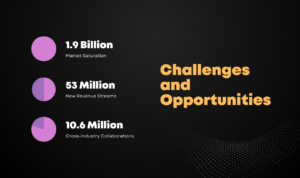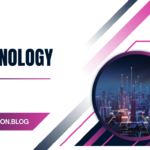Are you ready for the next evolution in technology? When it comes to advancements, we often think of groundbreaking inventions, rapid changes, and new trends reshaping industries. But have you ever wondered what happens when we reach the final stage, the last phase of technology development? Understanding this phase helps us envision a world where innovations reach their peak and society begins to fully harness their potential.
In this article, we’ll dive deep into the final stages of technological evolution, discuss the long-term impacts, and explore what lies beyond when technological progress slows down or even stabilizes.
1. The Last Phase of Technology
The last phase of technology development isn’t a term you come across every day. It represents the point at which a technology has reached its full maturity—where innovation becomes incremental rather than revolutionary. The foundation of this concept lies in the Technology Life Cycle (TLC), which consists of four main stages: introduction, growth, maturity, and decline. However, there’s a fifth stage that often gets overlooked—the phase of optimization and sustainability.
When a technology reaches this stage, it’s no longer about creating new capabilities. Instead, the focus shifts to maximizing efficiency, optimizing usability, and ensuring longevity. It’s at this point where we start questioning, “What’s next?” So, what exactly happens during this last phrase?
- Efficiency and Performance Optimization: Companies and developers focus on perfecting the existing system, minimizing flaws, and enhancing performance without introducing major changes.
- Standardization: The technology is widely accepted, and best practices are established. This standardization reduces complexity and improves interoperability with other technologies.
- Widespread Adoption: The technology becomes more accessible, leading to cost reductions and broader usage across different sectors.
2. Examples of Technologies Reaching the Last Phase
To better understand this concept, let’s look at some technologies that have entered or are approaching their final stages of development:
- Personal Computers (PCs): While computers continue to evolve, the pace of change has slowed considerably. We’ve moved past the era of significant leaps in processor speeds or major form-factor changes. Today’s focus is on improving energy efficiency, cooling systems, and software optimization.
- Traditional Automobile Engines: The internal combustion engine is a classic example. Over the decades, engines have been refined to near perfection. However, new developments now focus on minor tweaks in fuel efficiency and emissions rather than revolutionary changes.
- Smartphones: Similar to PCs, smartphones are approaching a saturation point. The differences between flagship models are now subtle—incremental upgrades in camera quality, battery life, and processing speed, rather than groundbreaking innovations.
3. Indicators of the Final Technology Phase

When identifying whether a technology is in its last phase, several signs become evident. These include:
- Diminishing Returns on Innovation: Each new version or model of a product offers fewer groundbreaking features. Instead, enhancements are often cosmetic or aimed at niche audiences.
- Lower R&D Investments: As technology reaches maturity, companies often reduce their research and development spending. The focus shifts towards maintaining existing technology and supporting its widespread use.
- Increased Regulation and Compliance: Mature technologies often face more regulations as governments and institutions create rules to standardize their use, ensuring safety and fairness.
- Commoditization: When a technology becomes ubiquitous, it is often seen as a commodity rather than a luxury. This leads to price competition and a focus on efficiency, rather than innovation.
4. What’s Beyond the Last Phrase of the Technology?
You might be wondering: if a technology reaches its final stage, does that mean progress stops? Not exactly. The final stage is less about the end of progress and more about the beginning of transformation. As older technologies stabilize, new ones often emerge to disrupt the status quo. This cyclical nature is what fuels continuous innovation.
For example, while the traditional television broadcasting industry might be in its final phase, streaming platforms are experiencing exponential growth, revolutionizing how we consume media. Similarly, as internal combustion engines reach maturity, electric and autonomous vehicles are emerging as the next technological frontier.
In essence, the last phrase of the technology marks the point where its evolution slows down, and its transformative impact on society diminishes. But it doesn’t imply stagnation for the entire industry.
5. The Role of Sustainability and Ethical Considerations
As technology reaches its last phase, there’s often a growing emphasis on sustainability and ethics. In the earlier stages, the focus is on rapid development and adoption. However, at this point, the spotlight shifts to making technology more responsible and environmentally friendly. Questions arise around:
- Sustainable Production: How can we produce this technology with minimal environmental impact?
- Long-Term Use and Waste Management: What happens to devices when they reach the end of their lifecycle?
- Ethical Considerations: How can we ensure technology respects privacy and doesn’t contribute to social inequality?
This emphasis on sustainability is crucial for shaping how these technologies integrate into society. For example, the smartphone industry is now tackling issues like electronic waste and the ethical sourcing of raw materials.
6. How Companies Adapt to the Last Phrase

When technology reaches its final stage, companies must adopt new strategies to stay competitive. This often involves diversification, exploring new markets, and building complementary services. For instance, software companies may begin focusing on customer support and subscription-based models rather than solely on developing new features.
Take Microsoft as an example. The company pivoted from its traditional software sales model to a cloud-based subscription model with services like Microsoft 365 and Azure. This shift allowed them to remain a leader in the industry, even as traditional software development matured.
7. The Human Element
For consumers, the last phase of technology often means increased stability and lower costs. Products in this stage are well-refined, and most of the initial bugs and inefficiencies have been worked out. However, it can also lead to diminished excitement as each new iteration feels less revolutionary.
This phenomenon is evident in the smartphone market, where users now keep their devices longer before upgrading. With fewer groundbreaking features being introduced, consumers are no longer as eager to switch to the latest model every year. This shift in consumer behaviour has significant implications for manufacturers and retailers alike.
8. Challenges and Opportunities

While the last phrase of technology brings stability, it also comes with its set of challenges:
- Market Saturation: Companies may struggle to differentiate their offerings in a saturated market.
- Decreasing Margins: With increased competition, profit margins may shrink, leading to a focus on cost-cutting.
- Innovator’s Dilemma: Companies heavily invested in mature technologies might find it difficult to pivot towards new, disruptive innovations.
However, there are also opportunities:
- New Revenue Streams: Companies can explore new ways to monetize their technology, such as offering as-a-service models or focusing on after-market services.
- Cross-Industry Collaborations: Mature technologies often find new life through integration with emerging fields, such as combining AI with traditional industries.
9. Preparing for the Next Wave of Innovation
So, what comes after the last phrase of the technology? The answer lies in looking forward, not backwards. As technologies stabilize, businesses and individuals must prepare for the next wave of innovation. This preparation involves:
- Embracing Emerging Trends: Staying ahead requires being aware of emerging technologies such as quantum computing, blockchain, and biotechnology.
- Reskilling and Adaptability: The final phase often leads to shifts in job roles and required skills. Being adaptable is key to thriving in this environment.
- Investing in Future Technologies: Companies should allocate resources to researching disruptive innovations that can redefine the landscape.
Conclusion
The last phrase of the technology development is a critical concept for understanding the full lifecycle of innovation. It represents not an end, but a point of reflection and transition. As we navigate this stage, the focus shifts from rapid change to refinement, sustainability, and preparing for future breakthroughs.
Are you ready for the next chapter in the story of technology? By recognizing and adapting to the last phase, we can better position ourselves for the innovations yet to come, ensuring that each cycle of advancement brings us closer to a more connected, efficient, and sustainable future.



